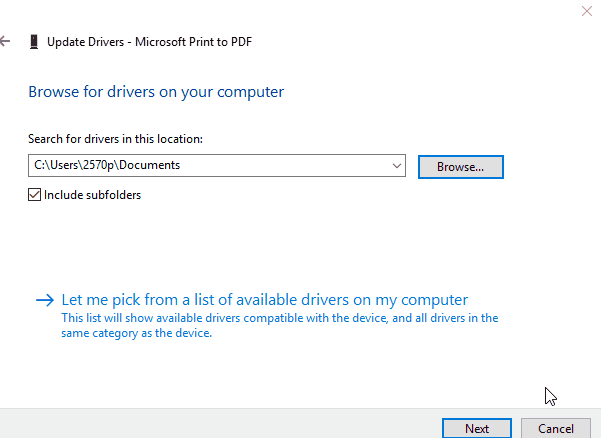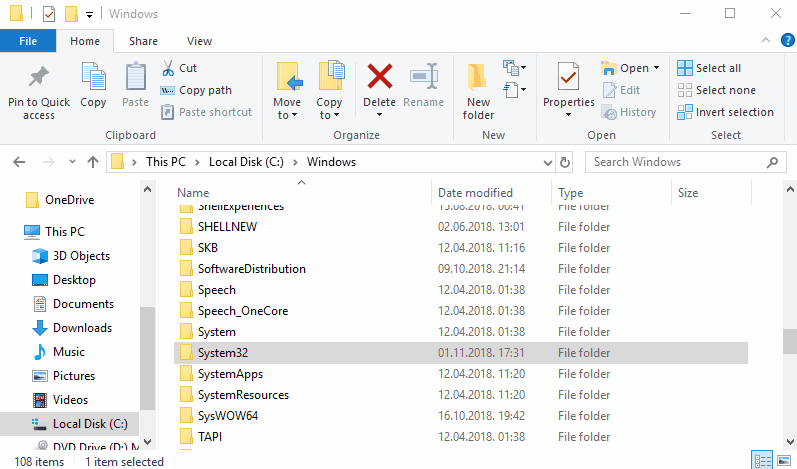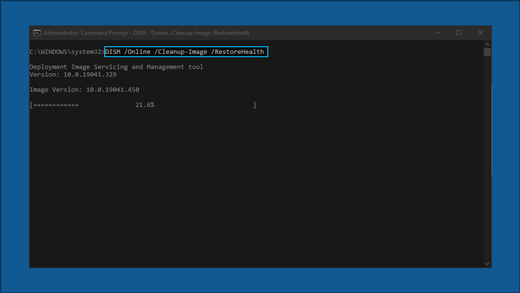- Fix: Windows Encountered a Problem Installing the Driver Software for your Device
- Solution 1: Run the Troubleshooter from Control Panel
- Solution 2: Specify the Path for Driver Installs
- Solution 3: Repeat the Process using the Hidden Administrator Account
- Solution 4: Provide Full Control to TrustedInstaller
- Troubleshoot problems updating Windows 10
- Have issues installing Windows updates? Start here.
- Still stuck?
Fix: Windows Encountered a Problem Installing the Driver Software for your Device
This is an error which appears after your computer tries to install a driver on your PC. The process of driver installation is usually triggered when you plug in a certain device into your computer for the first time and the error has appeared with several devices: iPods, cameras, headsets, etc.

The path of solving the problem is pretty much similar in all of these scenarios and there are several useful methods you can use to solve the problem. We have created this article in order to help you so make sure you try out these methods!
Solution 1: Run the Troubleshooter from Control Panel
This is probably the easiest way of troubleshooting the problem as it consists of running a troubleshooter which should identify and resolve the problem automatically. This method did help several users but don’t be upset if it doesn’t work out for you as there are other methods as well. It’s definitely worth giving this one a shot!
- Start up Control Panel by searching for the utility in the Start button or by clicking the Search button (Cortana) button at the left part of your taskbar (bottom left part of your screen.
- You can also use the Windows Key + R key combo where you should type “control.exe” and click Run which will also open Control Panel directly.

- After Control Panel opens, change the view to Category and click on View devices and printers under Hardware and Sound in order open this section. Note that you will have to solve the problem using Control Panel and not Settings on Windows 10.
- Under the Devices section, locate the problematic device, left-click on it once, and click the Troubleshoot button at the top menu. If you don’t find your problematic device, click on your computer’s icon.

- Wait for the troubleshooter to finish trying to detect and solve the problem and follow the instructions on-screen to allow it to fix the problem. Check to see if the “Windows encountered a problem installing the driver software for your device” error still appears.
- If you have chosen to troubleshoot your computer in the Step 4, you should see a list of errors after the troubleshooter gathers the data. Choose the problematic device by clicking its radio button and choose Next. Follow the instructions on-screen.
Solution 2: Specify the Path for Driver Installs
This is probably the most popular method used to troubleshoot and solve this problem. This includes manually installing the driver for the device after plugging it in. This can be performed using Device Manager with the device plugged in. This has helped countless users and we highly recommend you don’t skip this method when troubleshooting!
- Click the Start menu button at the lower left part of your screen, type in Device Manager, and click its entry from the list of results at the top.
- You can also use the Windows Key + R combination by clicking both of these keys simultaneously in order to bring up the Run dialog box. Type in “devmgmt.msc” in the box and click OK.

- Locate the problematic device you want to troubleshoot under the proper menu, right click on in, and select Properties. After the Properties window has opened, navigate to the Driver tab and check for the Update Driver button.
- Click on it. From the new window which will appear, choose the “Browse my computer for driver software” option. Navigate to the C:\Windows\WinSxS location on your computer under the “Search for driver software in this location” option.

- Now your computer will check under this location for driver installation and it should hopefully prevent the ““Windows encountered a problem installing the driver software for your device” error from appearing
Solution 3: Repeat the Process using the Hidden Administrator Account
If the solution above does not help, you can try and use the hidden administrator account to resolve the problem as it will give you more hidden advantages. This profile can be accessed easily and you can login without a password. Try installing the device’s driver this way!
- On the login screen of your computer, when the computer boots or after you log out, click on the Power icon and hold the Shift key while clicking restart.
- Instead or restarting, a blue screen will appear with a couple of options. Choose Troubleshoot >> Advanced Options >> Command Prompt.
- Of course, you can open Command Prompt simply by using the Windows Key + R key combination and typing “cmd” before clicking OK or by searching for it.

- Copy and paste the following command in Command Prompt and click Enter. You should be able to see the “The command completed successfully” message in no time.
- Log into this admin account and wait for a couple of minutes before everything is ready.
- Now you can try restarting your computer, logging into the new administrator account without a password and plugging in your device in order to install it.
- After you are finished with the hidden administrator account, you can disable it again by opening an administrative command prompt and typing the following command:
Solution 4: Provide Full Control to TrustedInstaller
The TrustedInstaller account on your computer needs to have full control over the System32 and SysWOW64 folders on your computer and you should definitely provide it. This can be done easily but you will have to repeat the same process for both of these folders!
- Open your Libraries entry on your PC or open any folder on your computer and click on This PC option from the left side menu. Double-click to open your Local Disk C: and navigate to the Windows folder inside.
- Right-click the System32 folder and choose Properties from the context menu. Navigate to the Security tab and click the Edit button. Make sure you grant administrator permissions if prompted.

- Under Group or user names, look for the TrustedInstaller entry. If it’s present in the list, click on it to select it and check the box next to Full control under Permissions for TrustedInstaller.

- If it’s not present in the list, click the Add button and locate it in order to add it. After that, grant it full control as well. Repeat the exact same process for the SysWOW64 folder in the Windows folder.
- Restart your computer in order to apply the changes and check to see if the “Windows encountered a problem installing the driver software for your device” error still appears after you try to install or plug in your device.
Troubleshoot problems updating Windows 10
In Windows 10, you decide when and how to get the latest updates to keep your device running smoothly and securely. This article will help you answer questions and troubleshoot common problems with your Windows 10 update.
If you’re looking for info on how to activate Windows 10 or to verify that your installation of Windows 10 is activated, see Activate Windows 10.
Have issues installing Windows updates? Start here.
Your device may not be able to update to the latest version of Windows 10 for a few reasons. The following tips can help you pinpoint the issue affecting your device.
Before you begin, make sure your device is plugged into a power source and connected to the internet. Then, try the steps listed below to get your PC to update.
Some updates require administrator access. If your account doesn’t have administrator access, see Create a local user or administrator account in Windows 10. Or if someone else at home or in your office has an administrator account on your device, try asking them to install the updates.
Before trying any of the solutions below, make sure you back up your personal files. You can use File History to back up your files to another drive, or insert a USB drive and use File Explorer to drag and copy important files to the USB drive. If you’re signing into Windows with a Microsoft account, your system settings will be automatically restored after updating, once you’re connected to the internet.
You can also back up your files with OneDrive. For more info, go to Back up your Documents, Pictures, and Desktop folders with OneDrive.
Make sure that your device has enough space. Your device requires at least 16 GB of free space to upgrade a 32-bit OS, or 20 GB for a 64-bit OS. If your device has a small hard drive, you may need to insert a USB drive to update it.
If your PC is running low on storage, try the techniques at Free up drive space in Windows 10.
Many updates require you to restart your device. Save your work and close all open applications. Then, select Start > Power , and select either Update and restart or Update and shut down.
Even if you have downloaded some updates, there may be more available. After trying the preceding steps, run Windows Update again by selecting Start > Settings > Update & Security > Windows Update > Check for updates. Download and install any new updates.
Remove any external storage devices and drives, docks, and other hardware plugged into your device that aren’t needed for basic functionality. Then try to run updates again and see if this resolved your issue. If it didn’t, continue to the next tip.
If you’ve added hardware to your device, check for third-party driver updates and installation instructions on the hardware manufacturer’s website. Update any drivers, then try to run updates again and see if this resolved your issue. If it didn’t, continue to the next tip.
In the search box on the taskbar, type device manager, then select Device Manager from the list of results.
In the window that appears, look for any device with a yellow exclamation mark next to it. (You may have to select each category to view the list of devices.) Select the device name.
Select Action, and then choose either Update driver or Uninstall to correct the errors.
Common troubleshooting questions
If you are receiving an error message with a specific error code, try running the Windows Update Troubleshooter. If that doesn’t resolve the issue, see Fix Windows Update errors and follow the instructions to help resolve common update issues.
The time required to download and install updates depends on connection speed, network settings, and the size of the update. If the installation remains stuck at the same percentage, try checking for updates again or running the Windows Update Troubleshooter.
To check for updates, select Start > Settings > Update & Security > Windows Update > Check for updates.
To get help, in the search box on the task bar, type get help, then select Get Help from the list of results. To leave feedback if you run into further problems, in the search box on the taskbar, type feedback hub, then select Feedback Hub from the list of results.
Windows 10 is the most secure Windows ever, and we recommend you stay updated to protect your PC from security risks and to keep it running smoothly. However, you can temporarily pause updates as well as schedule a restart to install updates at a time that’s convenient for you.
Learn how to temporarily pause updates
Find out how to schedule a restart to install updates at a convenient time
You will only receive a notification when it’s time to restart your computer to apply the installed updates.
If you need to know where you left off in your work after an update, use Timeline to jump back in.
To get started with Timeline, select Task View on the taskbar, or press the Windows logo key +Tab and select the activity you want to resume.
Monthly quality updates on Windows 10 are quite small and have a minimal impact on data usage. Feature updates typically happen twice per year, and you can control when to install them. They require more data but are less frequent.
If you’re on a metered connection, some updates for Windows won’t be installed automatically. Metered connections in Windows 10
Your computer might be slow for a number of reasons, but updating to the latest version of Windows 10 can improve its performance. For help with a slow computer, see Tips to improve PC performance in Windows 10.
If you’re having trouble finding your files after an upgrade, see Find lost files after the upgrade to Windows 10 for other things to try.
Warning: Microsoft only recommends trying the procedures in this section if you’re comfortable working in the command line. These procedures require administrator permissions on your device.
In the search box on the taskbar, type command prompt, then select Run as administrator from the list of options. Select Yes. Next, in the window that appears, type the following commands one at a time, including the spaces as shown. After you type each command, press Enter. Then let each command complete before you type the next command.
net stop wuauserv
ren %systemroot%\softwaredistribution softwaredistribution.bak
ren %systemroot%\system32\catroot2 catroot2.bak
net start wuauserv
After all these commands are completed, close the Command Prompt window and restart your computer.
In some instances, third-party antivirus or security software can cause errors when you try to update to the latest version of Windows 10. You can temporarily uninstall this software, update your PC, and then reinstall the software after your device is up to date. We recommend using third-party antivirus or security software that’s compatible with the latest version of Windows 10. You can check compatibility by visiting the software manufacturer’s website.
Note: Before uninstalling software, make sure you know how to reinstall your programs and that you have any necessary product keys.
In the search box on the taskbar, type command prompt, and then select Run as administrator from the list of options. Select Yes. In the window that appears, type the following command, including the space as shown:
chkdsk/f C:
and then press Enter. Repairs will automatically start on your hard drive, and you’ll be asked to restart your device.
A clean restart starts Windows with a minimal set of drivers and startup programs. This helps eliminate software conflicts that occur when you install a program or an update that may cause issues updating your PC.
Learn how to do a clean restart
In the search box on the taskbar, type command prompt, then select Run as administrator from the list of options.
In the window that appears, type this command including spaces as shown:
DISM.exe /Online /Cleanup-image /Restorehealth
Press Enter. When the command operation has run successfully, you’ll see a confirmation message from Command Prompt that says, “The restore operation completed successfully” or “The operation completed successfully”.
Note: If you don’t see a confirmation message, retype the command and try again.
Next, type this command, including the space as shown:
sfc /scannow
Press Enter. Wait until the sfc scan verification reaches 100% completion, and then close Command Prompt.
Try running the Windows Update again.
Go to the software download page and select Download tool now to download the clean installation tool. Make sure to carefully read the notes on the software download page before using the tool.
Still stuck?
Contact Microsoft support if you continue to have problems with your Windows updates.




